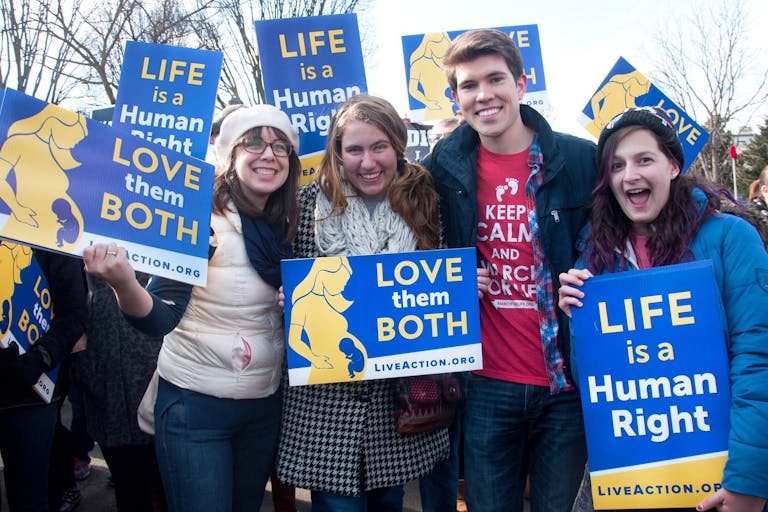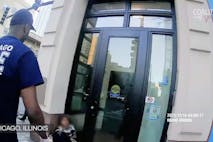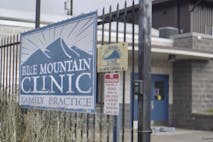
Before a confirmed spina bifida diagnosis, a nurse and doctor pressured her to abort
Unplanned Stories
·
Abortion clinic worker tells why she wouldn’t look at the terminated children
Author Sue Hertz interviewed clinic workers and observed antiabortion activity at a busy abortion clinic. Her book was written during the height of the Operation Rescue clinic blockades, and the book focuses mainly on the drama outside the clinic rather than inside.
However, Hertz did find the time to observe several abortions and describe how clinic workers reacted to seeing the bodies of aborted babies.
Hertz describes how a clinic worker named Doris coped with being in the operating room while the abortionist did a dismemberment abortion. Doris looked away as the doctor extracted a woman’s preborn child piece by piece and then sorted through the remains of the baby:
During the procedure, Doris would offer her hand for the patient to squeeze, or if the abortions were particularly painful, a notepad for the patient to bite…Doris knew what [the abortionist] was doing at the end of the examination table as he pored over the legs and ribs and hands, but she chose not to look. It wasn’t that Doris ignored the truth, but rather that her commitment was to the woman, not the fetus.
By focusing solely on the woman and blocking out her baby, Doris could cope with her job and continue to provide abortions. The abortionist had no such luxury, but, like most, he seems to have come to terms with his job.
Intel with the baby’s death by focusing only on the suffering woman.
Article continues below
Dear Reader,
In 2026, Live Action is heading straight where the battle is fiercest: college campuses.
We have a bold initiative to establish 100 Live Action campus chapters within the next year, and your partnership will make it a success!
Your support today will help train and equip young leaders, bring Live Action’s educational content into academic environments, host on-campus events and debates, and empower students to challenge the pro-abortion status quo with truth and compassion.
Invest in pro-life grassroots outreach and cultural formation with your DOUBLED year-end gift!
Pro-lifers, on the other hand, focus both on the woman and on the preborn child. The pro-life movement is diverse and different groups naturally direct their efforts towards different goals, but neither the baby nor the woman is ignored by pro-lifers. Crisis pregnancy centers such as Birthright and CareNet work with abortion vulnerable women as well as any women who need help finding the resources to have her baby. Silent No More, Project Rachel, and other postabortion groups help women heal. Other organizations, like The Center for Bioethical Reform (Warning; Graphic link) focus exclusively on the baby. Even clinic workers are not ignored by the pro-life movement. And Then There Were None is an outreach dedicated completely to them. And, of course, many pro-life organizations focus on educating the public so that abortion becomes a thing of the past.
In contrast, pro-choice groups focus exclusively on the woman involved and forget the preborn child. Their movement dedicates all its resources toward only one player in the abortion debate – the woman who cannot or will not give birth to her baby. Rather than supporting her with whatever choice she makes, these groups offer her only one choice – abortion. Once clinics take a woman’s money and perform the abortion, they are finished with her. She leaves, and is forced to cope with her abortion alone.
The dismemberment of the preborn baby in the above passage is horrific to the point where even the clinic worker herself cannot bear to look. But pro-lifers must look – at the child, at the mother, at the clinic worker, and at everyone else involved in the abortion debate.
Source: Sue Hertz Caught in the Crossfire: A Year on Abortion’s Front Line (New York: Prentice Hill Press, 1991) 109
Live Action News is pro-life news and commentary from a pro-life perspective.
Contact editor@liveaction.org for questions, corrections, or if you are seeking permission to reprint any Live Action News content.
Guest Articles: To submit a guest article to Live Action News, email editor@liveaction.org with an attached Word document of 800-1000 words. Please also attach any photos relevant to your submission if applicable. If your submission is accepted for publication, you will be notified within three weeks. Guest articles are not compensated (see our Open License Agreement). Thank you for your interest in Live Action News!

Unplanned Stories
·
Investigative
Carole Novielli
·
Investigative
Carole Novielli
·
Investigative
Nancy Flanders
·
Investigative
Nancy Flanders
·
Investigative
Carole Novielli
·
Guest Column
Sarah Terzo
·
Abortion Pill
Sarah Terzo
·
Guest Column
Sarah Terzo
·
Guest Column
Sarah Terzo
·
Guest Column
Sarah Terzo
·